Vent valve - views and features
Modern apartments and houses are hermetic constructions, therefore they need effective ventilation. Its essential element is the ventilation valves, which pass air masses in one direction only. Most often in air exchange systems there is a ventilation valve for walls, which can be inlet or reverse.
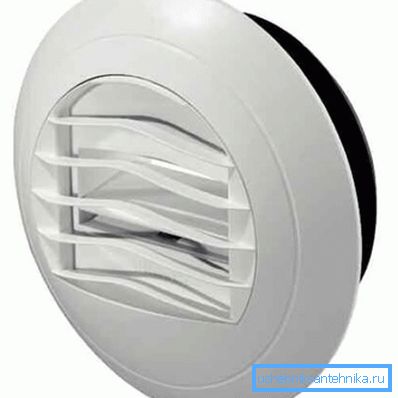
In this article we will examine in detail the purpose of such valves, consider their various types, features and installation process.
Purpose
The ventilating air valve carries out at once several important functions:
- Ensures the correct and uninterrupted functioning of the air exchange system.
- Regulates the air flow and ventilation modes.
- As mentioned above, it prevents the movement of air masses in the opposite direction or completely covers the vent.
- Provides a balance between supply and exhaust air flow.
- It is a protection against the penetration of street noise into the room.
In addition, today there are designs that, in addition to the above, also perform a fire prevention function. Thus, this device is an important element of ventilation.

Types of valves
To date, there are quite a few types of various ventilation valves. First of all, they differ in their purpose:
| Intake | Used for air leaks into the room. Can regulate the flow of incoming air masses in both manual and automatic mode. In addition, they can stop the functioning of the ventilation system, as with the complete shut-off valve is hermetic. |
| Exhaust | Provide air outlet from the room to the outside. Their main task is to prevent the movement of air masses in the opposite direction, which can occur due to various atmospheric phenomena. In addition, the devices prevent insects, down, and other debris from entering the room. |
| Windowed | Installed on plastic windows and provide automatic ventilation. |
Note! Ventilation is also called a valve for sewage, however, for air exchange in rooms they do not matter and are designed to compensate for the pressure in the system.
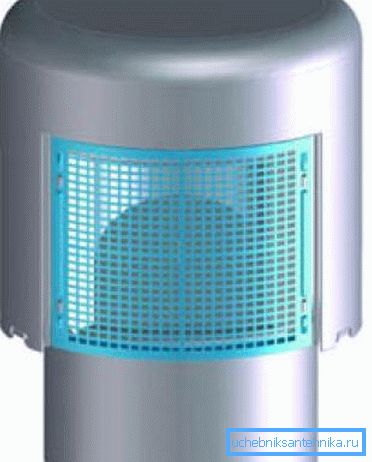
In addition, these products vary in shape.
They can be:
- Round;
- Square or rectangular.
Depending on their device, they are electric or manual. The electric valve works in conjunction with other ventilation equipment and automatically adjusts the air flow.
Valve arrangement
Inflow wall

Wall inlet valve is the most common design (find out here how the ventilation of the boiler house of a private house is equipped).
It consists of the following elements:
- Pipe - the length is slightly larger than the wall thickness.
- Outdoor grille - delays large debris.
- Soundproofing material - located inside the pipe.
- Filter - prevents the penetration of dust and other small debris.
- Moving element - regulates the intensity of the air flow and, if necessary, closes the system.
- Switch - designed to control the moving element.
- Cap cap - gives the design a decorative look and protects against mechanical damage.
This design has several advantages, such as:
- Easy installation;
- The appearance of the device does not spoil the interior design;
- Convenience of operation;
- Efficiency;
- The ability to install their own hands, even after finishing the room.
Tip! If the device is located near the radiator, the incoming air will immediately heat up.
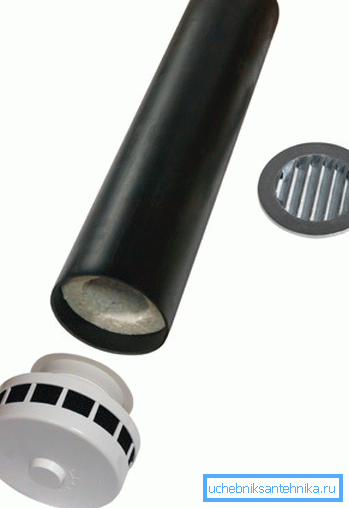
An example of such models are:
- CPV 125;
- KIV-125 and others
The device of electric valves is more complicated, since they have sensors and an electric drive. However, the principle of their work remains the same. The price of automatic devices, of course, is higher than mechanical ones.
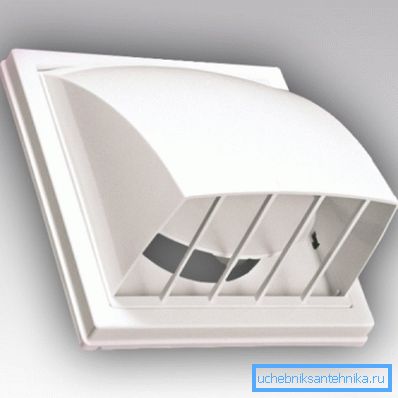
Exhaust
The exhaust valve, as a rule, has a simpler design than the intake valve and consists of only three elements:
- Fixed part in the form of a lattice - can be square or rectangular. Its main purpose is to give the design a decorative look, as well as to protect the valve from mechanical damage.
- Movable part (gate) - is a round or square petal, which can be opened only in one direction.
- Flange - designed to connect the device with the ventilation duct - always has a round shape.
Note! If you choose a valve for a bath, you need to pay attention to the material from which it is made, since the device must withstand high temperatures and high humidity. Therefore, you can not install plastic products.
Installation should be carried out carefully so as not to damage the valve, as well as to prevent construction debris from entering the structure. Otherwise, the device will not work as expected.
For example, the flap can always be open. Therefore, after installation, be sure to check the performance of the product.
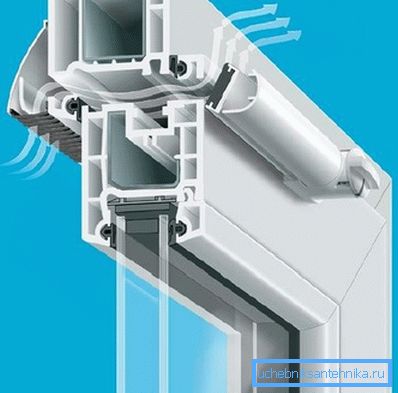
Window
This valve is a structure that is embedded in the window profile. His device is quite simple, however, the effectiveness does not suffer from this.
The only drawback is the lack of filtering, but since the gap itself is quite narrow, garbage from the street cannot penetrate through it. If necessary, the gap can be closed or the flow intensity can be adjusted with a special handle.
Window valves are supplied with the window. Therefore, their presence should pay attention when choosing windows. True, there are models that are mounted on the already installed plastic windows.
Note! There are models that do not allow to regulate the air flow, but only limit it in case of strong gusts of wind. Of course, it is better when there is an inflow control function. Therefore, at the moment it is necessary to pay attention when choosing a product.
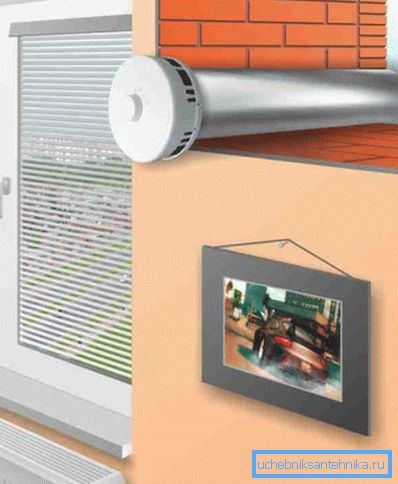
Installation of ventilation valves
Inlet
Before proceeding with the installation of the inlet valve, it is necessary to determine its location. To do this, a ventilation system should be drawn up in advance, in accordance with certain rules. It is best to entrust the work on such a scheme to specialists.
Further installation instructions are as follows:
- The first step is to measure the wall thickness and purchase a product of suitable length. On sale you can find devices with a pipe from 0.4 to 1 m.
- After the location of the device is determined, you need to drill a hole in the wall. The diameter must have a small margin so that the pipe can freely pass into the hole.
- After installing the pipe, all the gaps must be zenened so that the joints are tight.
- Then, a protective grille is installed outside, and the valve itself is mounted inside, in accordance with the manufacturer's instructions.
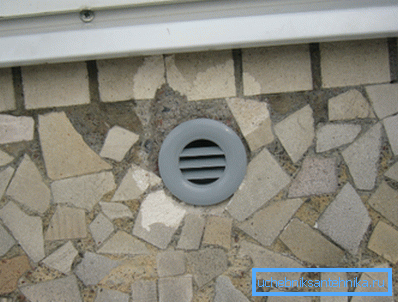
Note! To prevent precipitation and moisture from penetrating inside the structure, a rain gutter should be installed outside the grill.
Exhaust
Installation of the exhaust valve implies the presence of ventilation ducts, which can be located in the wall or in the ceiling.
Usually exhaust vents with valves are installed in technical rooms:
- On the kitchen;
- In the toilet;
- In the bathroom, etc.
The presence of exhaust elements in these rooms is sufficient for the exchange of air to take place in all the rooms, since its circulation occurs through cracks in the doors.
The entire installation boils down to connecting the structure with these channels. As a rule, elements are connected by flange method. After the valve itself is connected, an upper grille is applied to the wall or ceiling, which is most often attached to the surface with self-tapping screws.
Here, perhaps, and all the main points that you need to know about the ventilation valves in the arrangement of the system.
Conclusion
Valves are an important element of ventilation systems, allowing to regulate their work. Ventilation valves can be installed on both intake and exhaust vents. Moreover, the check valve and exhaust vent perform different functions, so they work in the system together.
From the video in this article, you can learn some additional information on this topic.